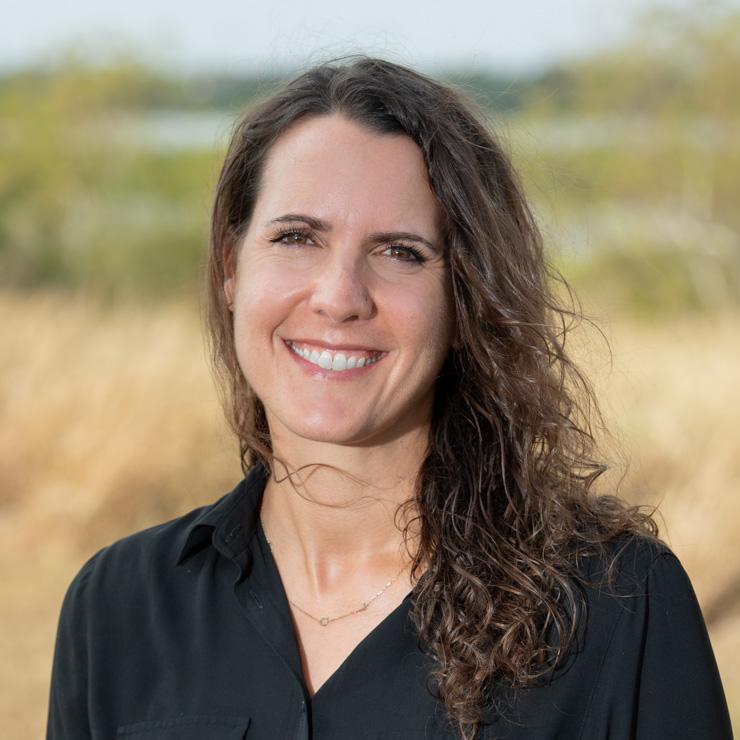Introduction and moderation
Chloe Demrovsky, Disaster Recovery Institute International President and CEO | Forbes Contributor | NYU Adjunct Professor
Resilience in the Built Environment: Learning from Nature
How do we balance population growth, economic development and the environment in the face of climate change? Much of the current focus is on mitigating the worst effects. However, it is increasingly clear that we have no choice but to pursue adaptation to changes that are already occurring. We can better withstand future shocks by rethinking how we rebuild after disasters and using tools like biomimicry to design thoughtful socio-ecosystems. This panel will explore some of the ways in which experts from both France and the USA are already approaching these challenges, learning from the natural world to blend the built and natural environments, and how we can leverage these concepts to build a more resilient future.
Speakers
Oysters and Oyster Reefs as Living Seawalls
Oysters can make effective natural infrastructure to combat coastal erosion and storm surge in those estuarine waters where they can thrive. As natural reefs they are self-repairing following storm or other damage that affect structural integrity of their naturally occurring reef structure, which typically orients to intersect prevailing currents. As individuals they can enhance other artificial coastal infrastructure designed for the same purposes, like using river rock, concrete, etc to form erosion barriers. Engineered structures can combine both natural and artificial constructs/techniques that employ biomimicry of natural reefs in orientation and structure to assure sustainability. Oysters, both on natural and artificial “reefs” perform multiple ecosystem services in addition to erosion and storm surge protection – filtering water to improve water clarity and quality; sequestering carbon; creating fish habitat; and, even providing a food sources for both animal and human consumption.
Evelyn Tickle, Founder, Inventor & CEO, Grow Oyster Reef, USA
Biomimetic Oyster reef building
GROW’s biomimetic, modular reef-building products boost nature’s systems by jumpstarting native oyster reefs to grow the native population of oysters, sequestering carbon, purifying oceans, and protecting shorelines. GROW’s vision is that all underwater infrastructure supports human and aquatic life symbiotically. Our coastlines are threatened by the impact of climate change. The oyster, a keystone species, in decline by 85% since the 1850’s, has been protecting the world’s coastlines for thousands of years. GROW products work with the oyster to build self-healing coastal defense infrastructures, attenuating wave energy and sequestering carbon.
Grow Oyster Reef create a range of scalable, concrete, biomimetic reef building substrate products, modeled after intact reefs. Fabricated using our proprietary CaCO3 concrete mix formulated to match the chemical composition of mature oyster shells, GROW products send chemical cues to attract embryonic oysters and provide early-stage nutrition.
Nicolas Vernoux-Thélot, In-Situ Architecture, France
New Aquitania : Eco-District
This project raises the following general question: how to develop the city and its land reserves while simultaneously addressing climate change, which involves preserving nature and existing biodiversity? Our answer consists in creating a biomimetic district with an ecological balance equivalent to Nature’s.
In concrete terms, the road network, the footprint of the buildings, the open spaces are dimensioned by studying the existing ecosystem and its resilient capacity to integrate the building. The oxygen / C02 cycle has been identified as the most constraining issue and leads to a maximum capacity of 5000 people.
Regarding the building footprint and templates, they were computed using a parametric tool that integrates solar input and tree preservation. Pines being a persistent species, they allow protection from the summer sun by providing shade and natural freshness.
The biomimetic approach avoids the principle of zoning and promotes a programmatic mix of buildings: residential, offices, local shops, facilities.
Eduardo Blanco, PhD candidate, CEEBIOS, France
Biomimicry in French sustainable urban projects: trends and perspectives from the practice
Biomimicry is a design framework with growing interests in sustainable architectural and urban design practice. Nevertheless, there is a significant lack of studies and knowledge regarding its practical application. In 2020, a French workgroup called Biomim’City Lab published a document identifying and describing 16 urban projects designed by French teams integrating biomimicry at various levels. Our research is an opportunistic study analyzing this data, aiming to identify trends and challenges in the French market. This sample indicates a trend of increasing interest in biomimicry on built space projects in France. Biomimicry was primarily applied at the façade/roof/soil systems, mostly using macroscopic models as ecosystems, plants, and animals. Designers declared to aim diverse objectives with the biomimetic approach; still, thermal comfort is the most recurrent in the sample. We also identified that challenges remain to foster the field application, as the lack of awareness of the urban fabric stakeholders on the topic and the gaps between research and design practice.
Ulsia Urrea Marino, Graduate Research Assistant at Harte Research Institute, USA
Coastal cities seen as socio-ecosystems systems: challenges and opportunities in the face of climate change
This work analyzes the cities of the Gulf of Mexico as a socio-ecosystems system. This conceptual and methodological framework makes it possible to identify the threats and risks that coastal cities face as a result of the climate change, in particular, from the perspective of urban planning and management, where coastal ecosystems through the provision of ecosystem services and nature-based solutions can help to undertake adaptation and mitigation actions. This study is in the phase of identifying the conceptual and methodological framework. However, it proposes a working hypothesis, research questions, and some characteristics to select the coastal cities to analyze in Mexico, Cuba, and the USA: one in each country.
Karim Selouane, PhD, CEO & Founder Resallience (Sixense Group / VINCI), France
A definition framework for climate change resilience and adaptation in the Built environment
While the construction sector must organize itself to meet many challenges, the most important of which is limiting its contribution to climate change, through mitigation, it must also meet other challenges posed by climate change, such as health and well-being, safety from shocks, continuity of services, and the integrity of the building, which represents a definite economic challenge… This is why the HQE-GBC Alliance proposes, through a definition framework soon to be available, a structuring and holistic vision of resilience and adaptation to climate change in the built environment in order to support the actors and facilitate their operational implementation in the construction sector. This generic framework, which can be used for new buildings, but especially for renovation and existing buildings, proposes a multi-criteria and global approach at the scale of buildings and developments, including infrastructures and defines 5 areas and 15 action levers to act, these are: – 1. Planning, services and territorial cooperation – 2. Ecological studies and diagnoses of the site – 3. Urban forms, structures and components – 4. Health and comfort conditions for all – 5. Uses and behaviors The publication will add to the collection of tools already available to construction actors to better take into account resilience and adaptation issues in their practices.
Jim Blackburn, Baker Institute (Rice University) Carbon Working Group, USA
BCarbon: Sequestering Carbon Naturally for Economic, Physical and Social Resilience
BuildingNatural Coastal Resilience and Infrastructure using a unique funding approach – Carbon sequestration credits. We started our work on soil carbon because we wanted to establish a buffer zone along the Texas coast for surge flooding. That was when we developed the idea of carbon sequestration payments and encountered the need to develop our own system.








